Bern's CHEOPS is flying into space soon
Bern's CHEOPS space telescope was recently assembled on its carrier platform in Spain. The finished satellite was now for tests in Switzerland. Swiss Federal Councillor Johann N. Schneider-Ammann unveiled two plaques with 2,748 children's drawings on the research satellite today in an official ceremony.
CHEOPS (CHaracterising ExOPlanets Satellite) is another highlight in the more than 50 years of space research history at the University of Bern. The first milestone was Bern's solar wind sail during the moon landing in 1969. Several involvements in space missions followed with high-tech instruments, most recently the CaSSIS Mars camera. With CHEOPS the University of Bern is not just contributing an instrument for a mission but is also leading it together with the European Space Agency, ESA.
Search for habitable planets
CHEOPS consists of a space telescope developed and assembled by the University of Bern and a satellite platform that carries the telescope allowing it to be operated in space. The telescope will observe how planets in other solar systems pass in front of the parent star and assist in the search for potential habitable planets. The components for the satellite were supplied by partner institutes from eleven European nations and assembled by Airbus and Thales Alenia Space Switzerland in Madrid.
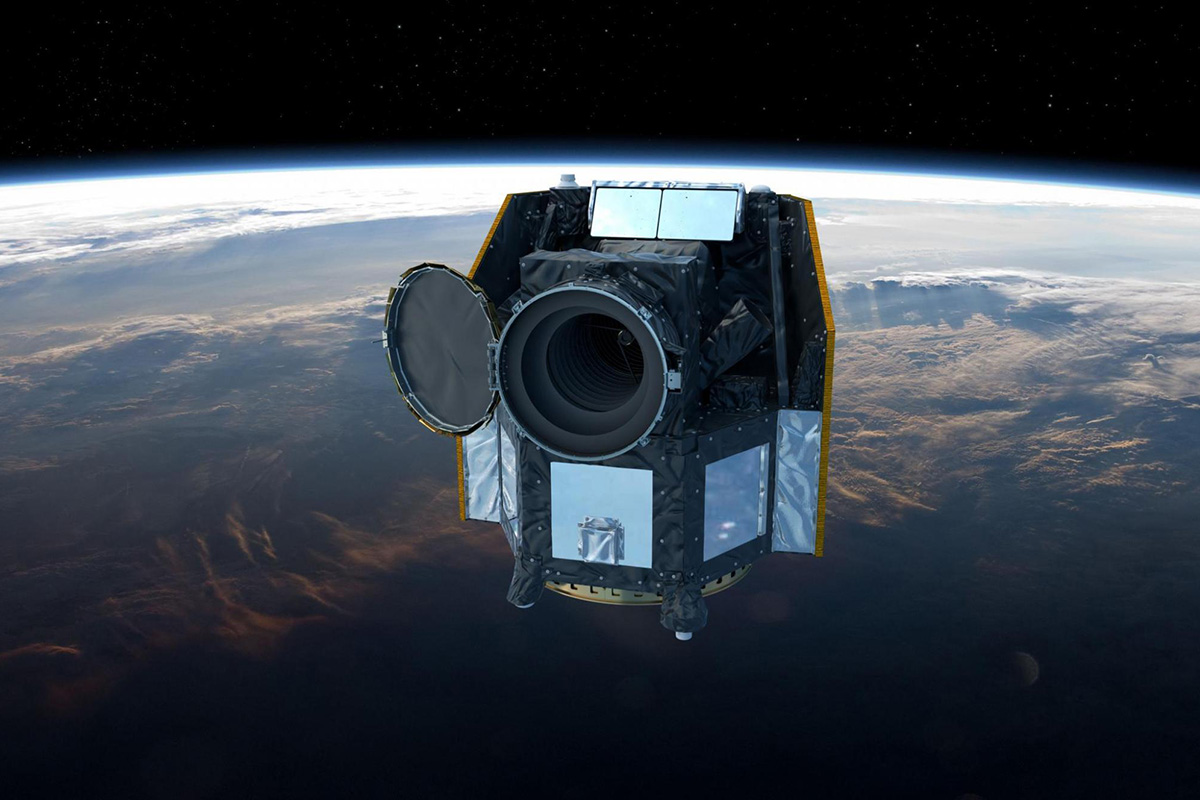
Three years ago, thousands of children from all over Europe responded to the call from the CHEOPS team to send in drawings with space subjects inspired by research into planets. In the end, 2,748 were randomly selected out of all the submitted drawings and these will fly into space with the CHEOPS research satellites at the start of 2019.

Official ceremony in the presence of Swiss Federal Councillor Schneider-Ammann
The complete satellite was now in Switzerland just once before the launch in order to undergo a range of tests in the RUAG clean room near Zurich. The University of Bern's Center for Space and Habitability (CSH) and the State Secretariat for Education, Research and Innovation (SERI) took this occasion to invite guests to an official ceremony. The children's drawings, which had been reduced by a factor of 1,000, engraved on two titanium plaques and attached to the satellite, were unveiled by the Swiss Federal Councillor Johann N. Schneider-Ammann. ESA Director General Johannes-Dietrich Wörner, rector of the University of Bern Christian Leumann and Principal Investigator of the CHEOPS mission Willy Benz from CSH were also in attendance, among others.
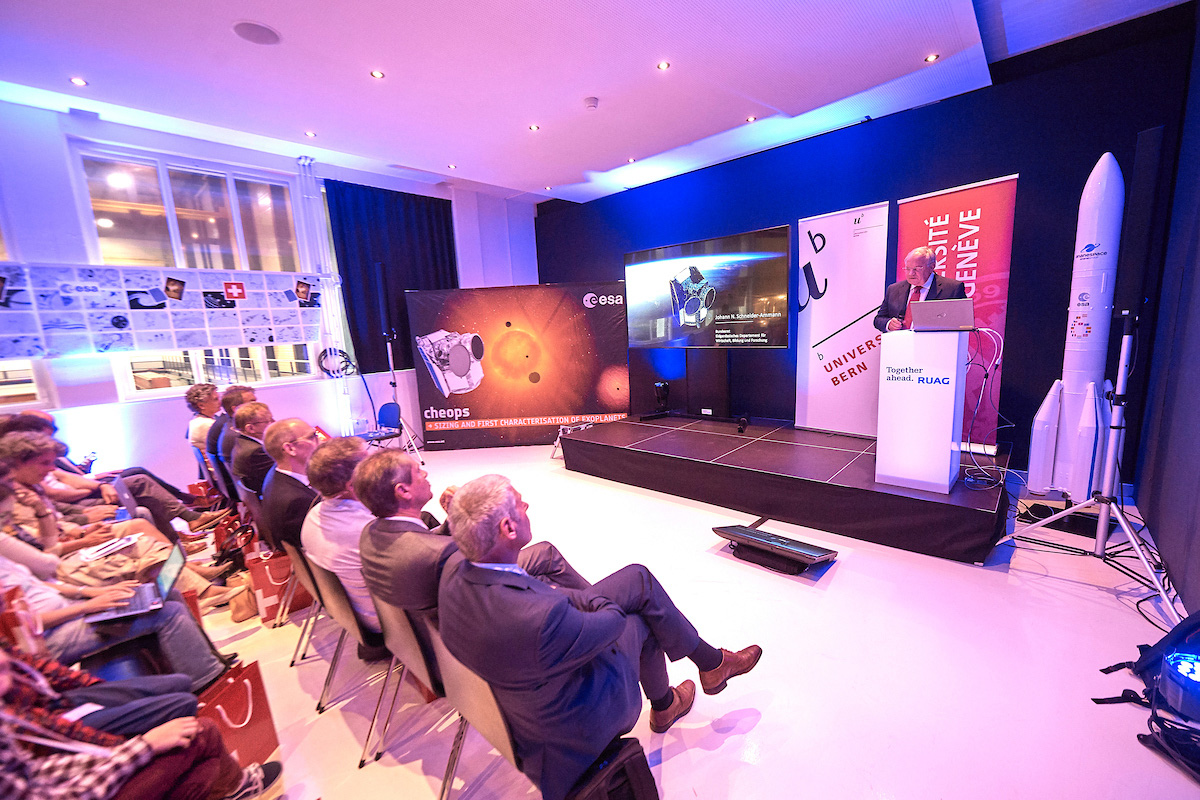
Inspiring the young generation for space research
"It's a great pleasure for me to be able to unveil the plaques with 2,748 drawings from all over Europe together with my guests today," said Swiss Federal Councillor Johann N. Schneider-Ammann. He emphasised that initiatives to inspire children and young people for mathematics, information technology, sciences and technology were particularly important to him. He spoke to three children, who were representing all those invited whose drawings were on the satellite and presented them with a gift.
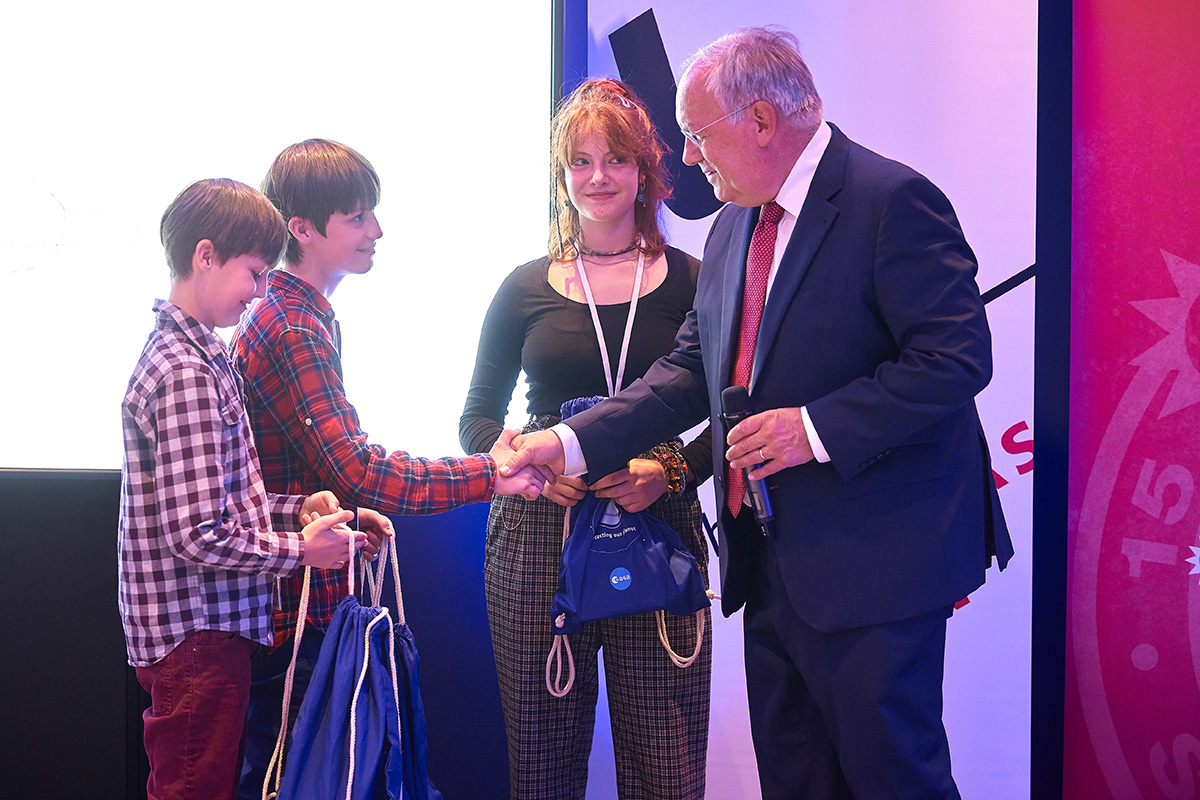
For Johannes Wörner, Director General of the ESA, CHEOPS is a unique project that may be smaller than others but has a big mission: "The investigation of planets, which CHEOPS is setting its target on, will be essential to find out what these planets consist of – and in the long-term it will assist in the search for life outside our solar system."
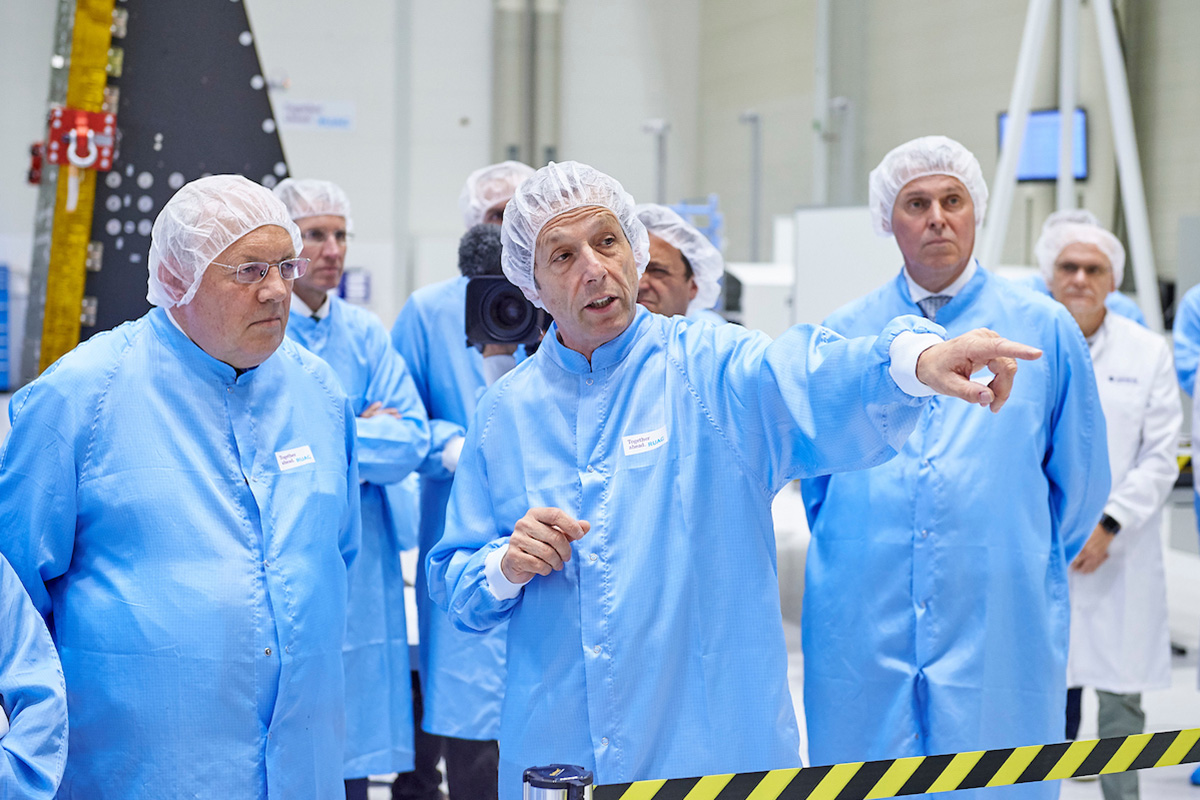
"CHEOPS is something really special for the University of Bern," said rector Christian Leumann. "Our presence in space research gives Switzerland and the canton of Bern international visibility." Willy Benz was proud of what had been achieved: "CHEOPS has proven that Europe can realise scientific space missions with small investments within a very short time." The promotion with children’s drawings was important to him personally: "Offering children an opportunity to send their own drawings into space was the best way to arouse their curiosity and stimulate their imagination."
New technology developed
The space researchers' collaboration with the physicist and lecturer Guido Bucher who engraved the more than 2,700 children's drawings onto the two book cover sized titanium plaques with a laser at Bern University of Applied Sciences was also successful. At the same time he managed to develop an innovative method that is now being used for the CHEOPS project and can possibly be used later in industry.
Bucher had to overcome several problems in the process, for example when the plates suddenly sagged after lasering. He had to reach for the double-sided carpet tape from time to time too. In response to the question why children’s drawings are going to fly into space with CHEOPS he answered: "The many great, imaginative and clever drawings that I had the privilege of lasering onto the titanium plates prove: the project is doing its bit to introduce children to technology and sciences and inspire them for this." This is also important with a view to the STEM skills shortage.
Last stops before the launch
CHEOPS is going to travel to ESA's head office in the Netherlands soon, where it will undergo more tests. The satellite will then return to Airbus in Spain where the telescope was mounted on the satellite carrier platform this summer before the whole thing came to Switzerland. After the final tests, it will then head to the Kourou space station in French Guiana for the launch. CHEOPS is supposed to be launched from there in the first half of 2019.

As soon as the satellite has reached its position in the Earth's orbit, CHEOPS will start its measurements and contribute to finding out more about worlds outside our solar system, some of which may be similar to those in the children's drawings that are flying with it into space.
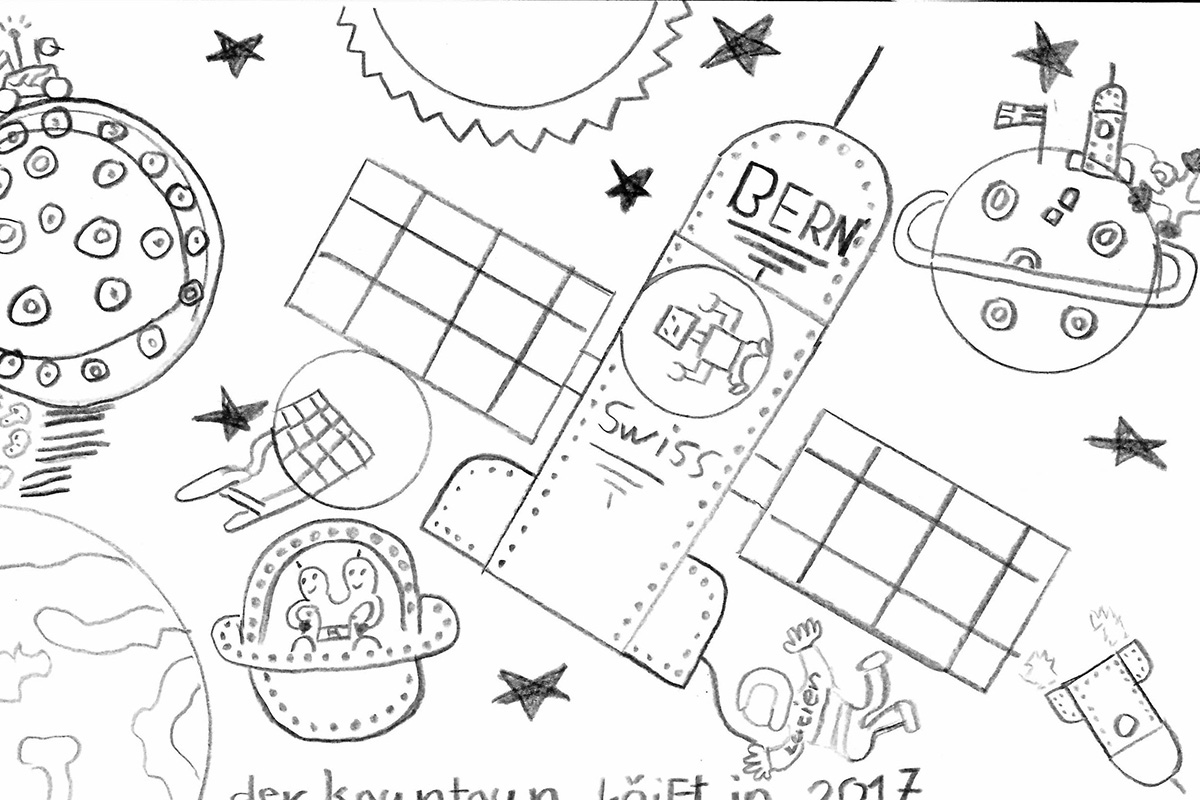
CHEOPS – in search of potential habitable planets
The CHEOPS mission is the first of the ESA's newly created "S-class missions" and is dedicated to characterising exoplanets’ transits. "CHEOPS" (CHaracterising ExOPlanets Satellite) will take highly accurate measurements of stars and monitor small changes in their brightness that are caused by a planet’s transit in front of the star. The planet's size can be determined as a result of this. Combined with existing information about the planet's mass, it will be possible for CHEOPS to calculate the planet’s density and derive from this whether it is made of stone or ice, or is even a water world. This will be the first step in characterising exoplanets, planets outside our solar system.
CHEOPS was developed as part of a partnership between the European Space Agency (ESA) and Switzerland. Under the leadership of the University of Bern and ESA, a consortium of more than a hundred scientists and engineers from eleven European nations was involved in constructing the satellite over five years. A Sojus rocket will take the research satellite together with a larger Italian radar satellite up 700 kilometres to the Earth’s orbit.
More information: www.cheops.unibe.ch
About the author
Nathalie Matter is a PR/Media editor in Corporate Communication.